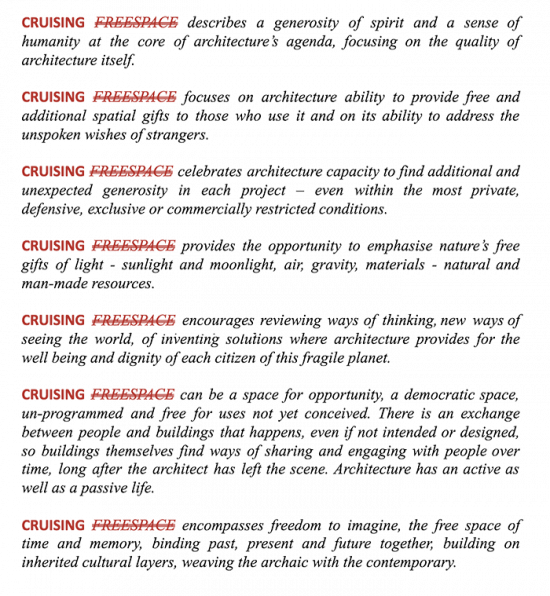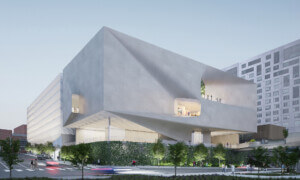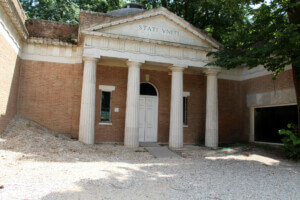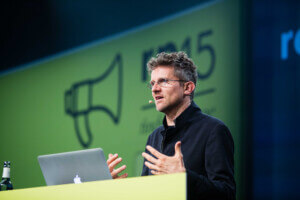The informal sexual use of spaces like bathrooms, parks, and parking lots, as well as their more explicit cousins like bathhouses and back rooms is celebrated at the Cruising Pavilion, presented at the 16th Venice Architecture Biennale. Riffing on the Biennale’s Freespace theme, the Cruising Pavilion “wishes to highlight the failure to consider Freespace as defined by this edition of the Venice Architecture Biennale, without questioning the hetero-normative production of space itself.”
Curators Pierre-Alexandre Mateos, Rasmus Myrup, Octave Perrault and Charles Teyssou underscore how cruising exists both as architecture and against it. It’s an inherently spatial practice that uses—or perhaps more aptly—misuses space to create connections between people, primarily gay and bi men. Cruising, in turn, reformulates the purposes and meanings of the very space it happens in. In re-routing spatial logics through illicit interpersonal interaction, cruising is itself a practice part and parcel of the urban and architectural landscape. A form of para-architectural dissent, cruising mines desire from taboo bathroom moments and makes serene parks into sites of ecstatic pleasure, while rendering dungeons desirable and dark labyrinths secure.

As the curators point out, considering real space in a post-Grindr age is even more critical, as sexuality, as well as its attendant concerns of gender, race, and class, plays out in the interstices between lived, material space and the space generated by and generative of the screen. Thus, interrogating non-normative spatial practices questions the project of architecture as such. The Cruising Pavilion radically embraces aberrant architectures and sexual spatialities by putting the hidden on display and inviting cruising into the Biennale.
The Cruising Pavilion will feature contributions from artists and architects, including Alison Veit, Andreas Angelidakis, Andrés Jaque / Office for Political Innovation, Atelier Aziz Alqatami, Carlos Reyes, Diller Scofidio + Renfro, DYKE_ON, Etienne Descloux, Hannah Quinlan & Rosie Hastings, Henrik Olesen, Ian Wooldridge, Lili Reynaud Dewar, Monica Bonvicini, S H U Í (Jon Wang and Sean Roland), Studio Karhard, Studio Odile Decq, Özgür Kar, Pascal Cribier and Louis Benech, Pol Esteve and Marc Navarro, Prem Sahib, Tom Burr, and Trevor Yeung. It is produced in collaboration with Venetian non-profit Spazio Punch.
Cruising Pavilion
Spazio Punch, Giudecca 800/o, Venezia 30133, Italia
May 25–July 1, 2018











